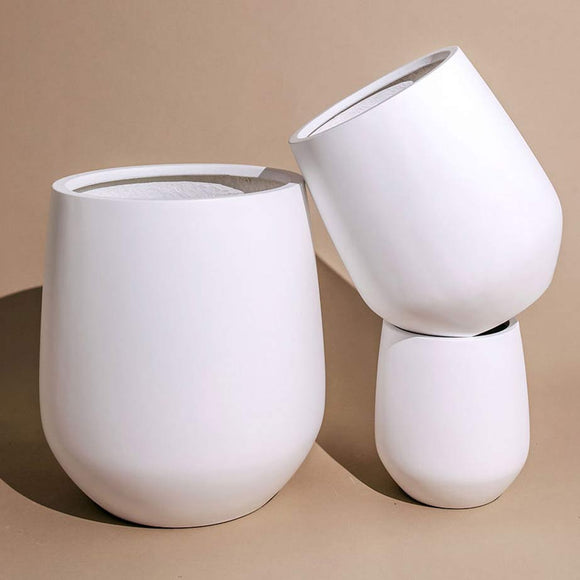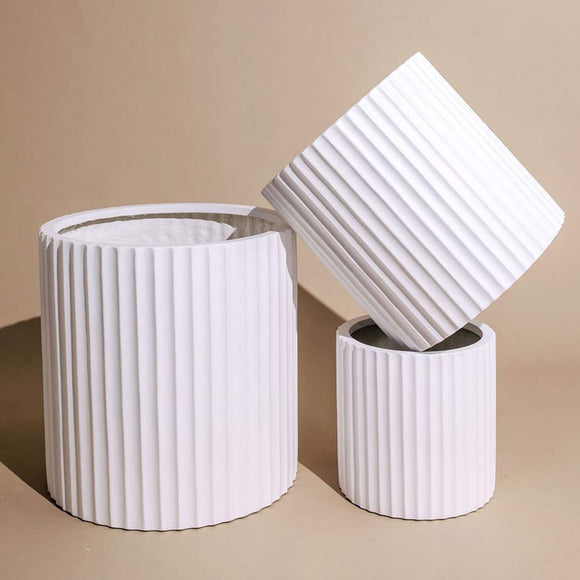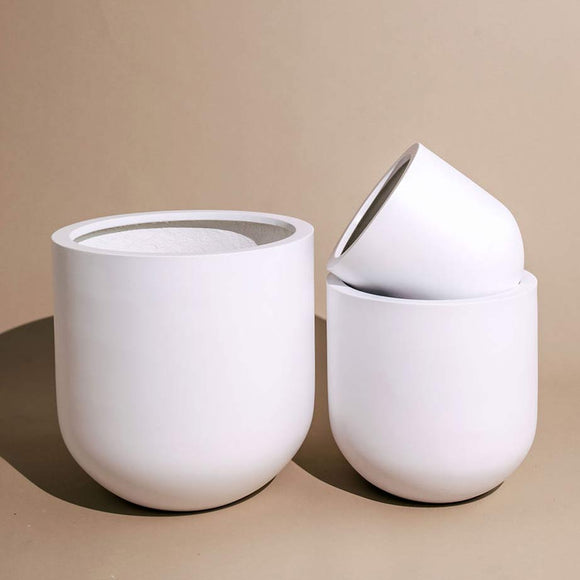Prickly Pear- Opuntia Burbank Spineless
The Opuntia Burbank Spineless is a variety of Prickly Pear created by hybridiser Luther Burbank in the early 1900s by cross-pollinating the Mexican Prickly Pear (Opuntia Tuna) and the Indian Fig (Opuntia Ficus-Indica). This Californian hybrid is highly valued for its lack of spines and high nutritional value. It can be used as food colouring, natural dye, or to manufacture candles.
This large, branching, shrubbing cactus features round, flat, paddle-shaped leaves that add a sculptural element to any garden. Despite its striking appearance, this cactus is easy to care for, making it an excellent choice for beginners or anyone looking to add a low-maintenance yet visually striking plant to their collection.

Prickly Pear look great in Lucy, mud.
General Care
The mature paddles commonly lose their spines, making them less challenging to handle than other prickly pears. In the ground, these cacti will grow as big as you let them, and expect to see 3-6 paddles form each growing season (Spring-Summer). Pruning can easily be done with a sharp serrated knife.
Light
The Opuntia Burbank Spineless thrives in full sun and requires at least 6 hours of direct sunlight daily. However, it's important to note that their skin can suffer from sunburn in warmer months when exposed to full-day sun. This damage is usually cosmetic but can be avoided with adequate watering.
Water
This drought-tolerant plant can survive long periods without water. However, it's essential to water it thoroughly and allow the soil to dry out before watering again. Overwatering can lead to root rot and other problems

Prickly Pear featured in Thomas, black.
Soil
The Opuntia Burbank Spineless prefers well-draining soil - a cactus mix or sandy soil works well. Fertilisation is unnecessary but can be done during the growing season with a low-nitrogen fertiliser.
Common Problems
Watch out for mealybugs and scales, which can infest the plant. If you notice any signs of infestation, remove the affected area and treat it with insecticidal soap or neem oil.
Please note: some varieties of Prickly Pear are prohibited in the country for trade. Thanks to a successful biological control program, this variety is permitted to share and owned in NSW.
You might also like to read this blog: 3 Best Cacti for Garden Pots.
And check out our list of the 20 Best Cactus Plants
















